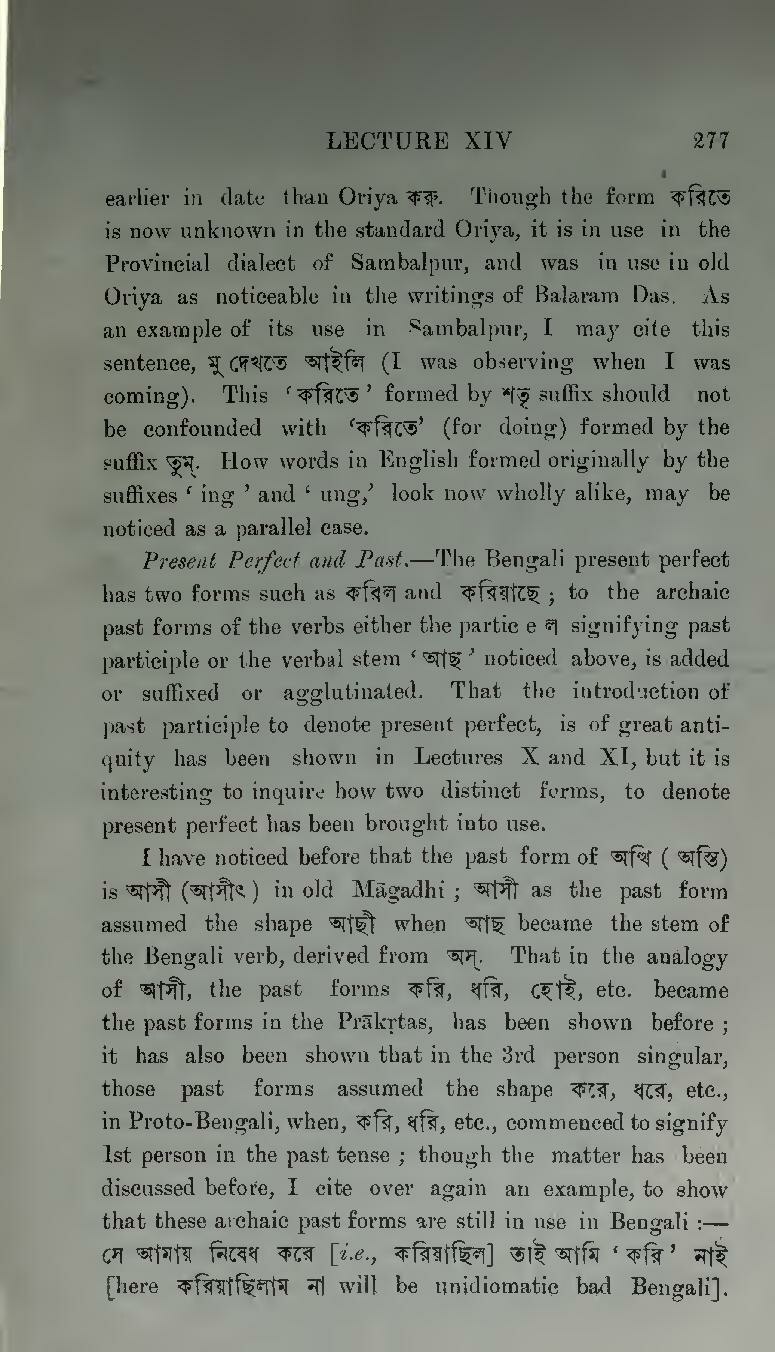earlier in date than Oriya করু. Though the form করিতে is now unknown in the standard Oriya, it is in use in the Provincial dialect of Sambalpur, and was in use in old Oriya as noticeable in the writings of Balaram Das. As an example of its use in Sambalpur, I may cite this sentence, মু দেখতে আইলি (I was observing when I was coming). This 'করিতে' formed by শতৃ suffix should not be confounded with 'করিতে' (for doing) formed by the suffix তুম্. How words in English formed originally by the suffixes 'ing' and 'ung,' look now wholly alike, may be noticed as a parallel case.
Present Perfect and Past.—The Bengali present perfect has two forms such as করিল and করিয়াছে; to the archaic past forms of the verbs either the particle ল signifying past participle or the verbal stem 'আছ' noticed above, is added or suffixed or agglutinated. That the introduction of past participle to denote present perfect, is of great antiquity has been shown in Lectures X and XI, but it is interesting to inquire how two distinct forms, to denote present perfect has been brought into use.
I have noticed before that the past form of অত্থি (অস্তি) is আসী (আসীৎ) in old Māgadhi; আসী as the past form assumed the shape আছী when আছ became the stem of the Bengali verb, derived from অস্. That in the analogy of আসী, the past forms করি, ধরি, হোই, etc. became the past forms in the Prākṛtas, has been shown before; it has also been shown that in the 3rd person singular, those past forms assumed the shape করে, ধরে, etc, in Proto-Bengali, when, করি, ধরি, etc., commenced to signify 1st person in the past tense; though the matter has been discussed before, I cite over again an example, to show that these archaic past forms are still in use in Bengali:—সে আমায় নিষেধ করে [i.e., করিয়াছিল] তাই আমি 'করি' নাই [here করিয়াছিলাম না will be unidiomatic bad Bengali].
